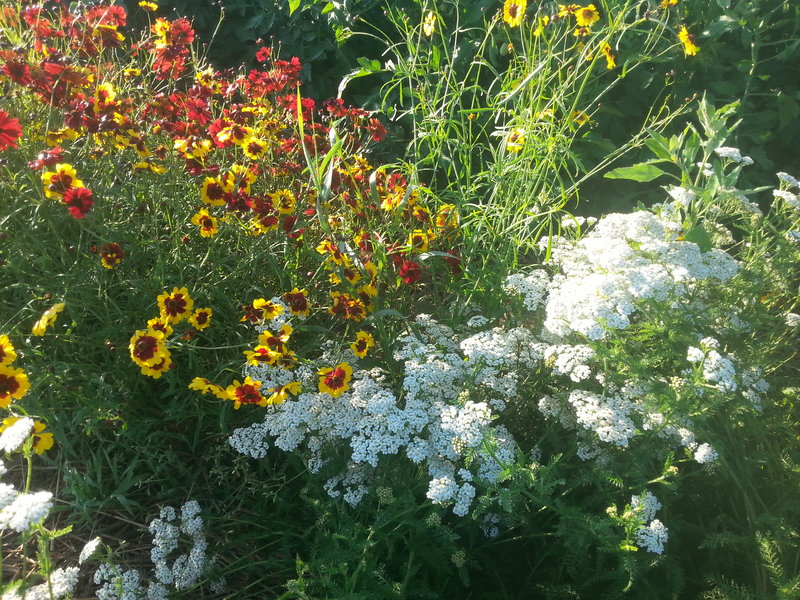More Plant Diversity Equals More Pollinator Diversity

Kim Fellows
First, how much diversity is enough? Dr. Gordon Frankie, lead researcher at the UC Berkeley Urban Bee Lab, suggests this rule of thumb based on many years of research: "A garden with at least 20 different plant types is ideal for providing diverse sources of nectar and pollen, although fewer types can also do the trick if they are highly attractive." If 20 plant species seems overwhelming, a good goal can be to gradually increase the plant diversity in your garden over time, as your budget and space allow.
Ecologist Mark Wonneck recommends choosing flowers that:
1) range from being open and shallow to deep and complex;
2) have different colours, heights and growth habits;
3) provide good pollen and nectar resources; and,
4) exhibit overlapping bloom periods from early spring to late autumn.
Because pollinators vary in size, length of their tongues, and the ways in which they access the nectar and pollen in a flower, the kinds of flowers you plant will determine the diversity of local pollinators that you attract.
How big should your flower patches be? Gordon Frankie believes that an ideal patch size for each flower type is one square meter, and the patches can be any shape.
Native plant species endemic to your local area are always best for pollinator gardens, since these plants have co-evolved with their native pollinators. For example, it is important that the time that a bee emerges from hibernation coincides with blooming plants that offer food. Native plants require less maintenance, will grow better if suited to your growing conditions, and since they are perennial in most cases, will offer you the best bang for your buck. Seek out native plant resources in your area, and peruse the lists offered on our website to get started.
Be sure to leave parts of your garden or property untidy and unmulched for ground-nesting bees. Leaf and brush piles, fallen trees and other dead wood, and spent canes and stems left in your garden will provide nesting spaces for cavity-dwelling bees and other local pollinators. If you don’t love the 'wild look', you may want to consider the recommendation of the “smart-gardening” initiative from Michigan State University Extension: a mullet garden! Follow the principle of the hairstyle – "business in the front, party in the back" – to allocate untidy areas to your backyard, and let the pollinator party go wild!
Happy Spring!
Not yet a member?
An annual membership to Seeds of Diversity gives you access to our seed exchange, seed grow-out programs, and our online news.

We depend on donations to do our work.

Thank you for your support!
